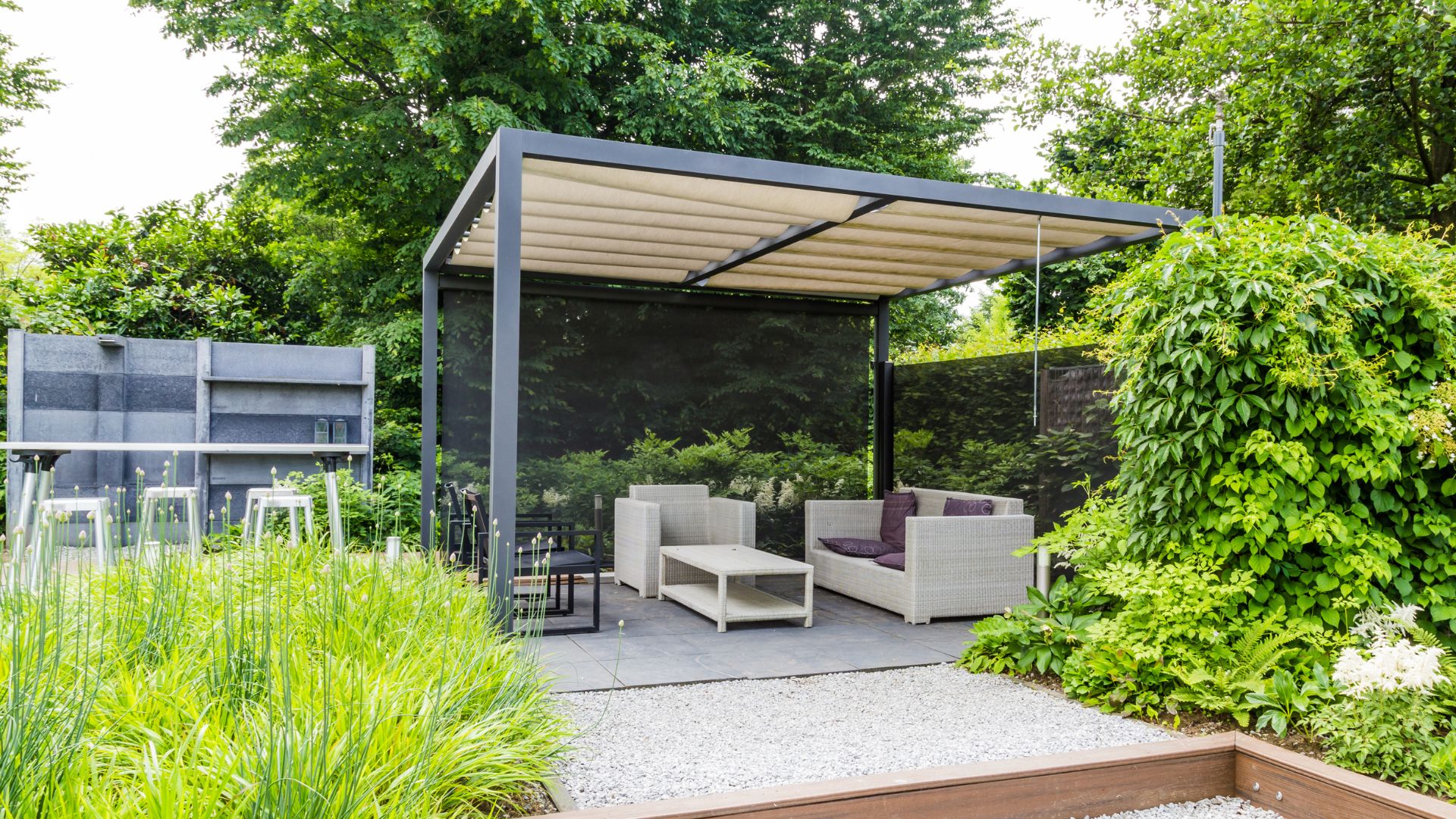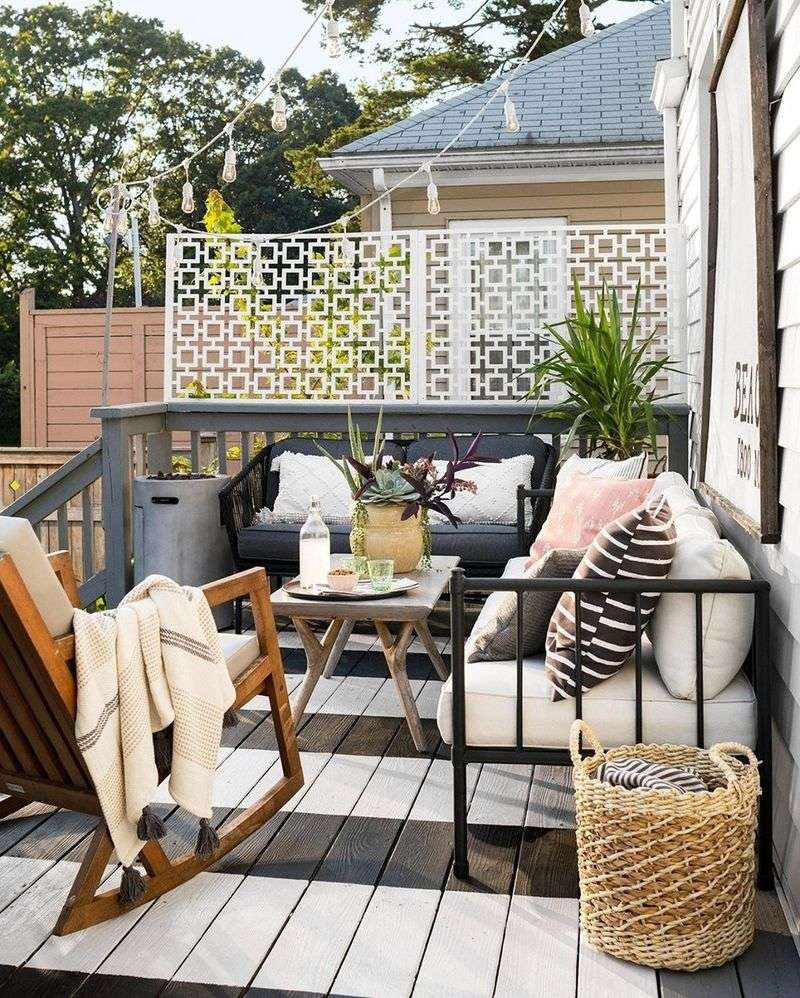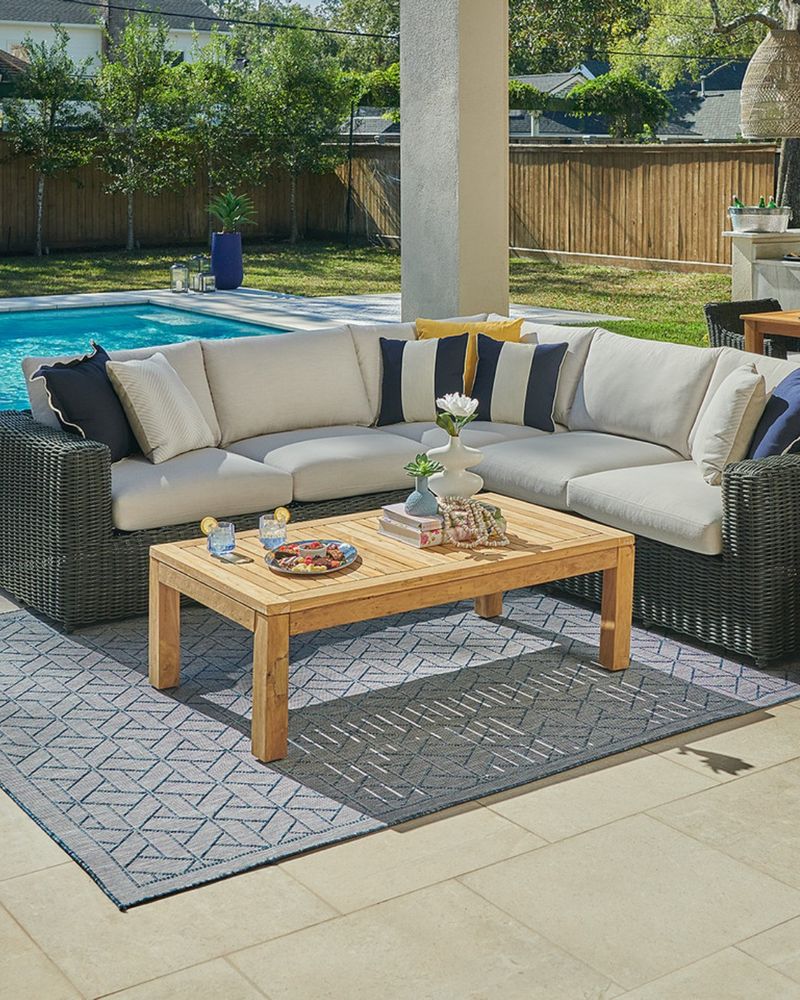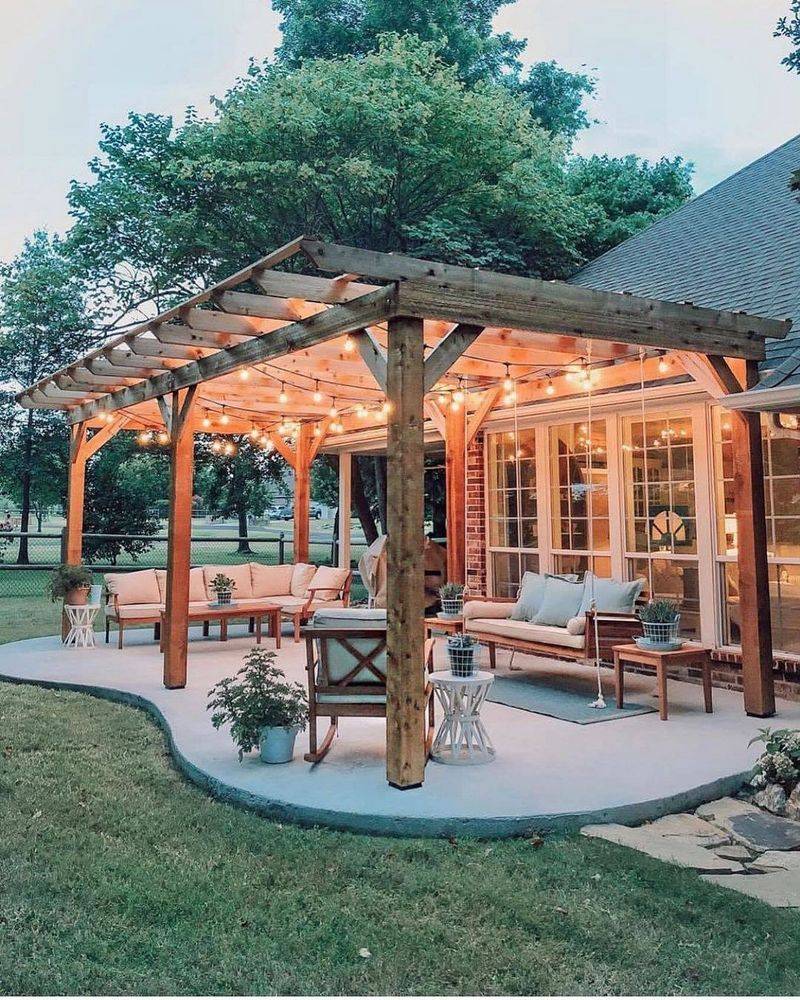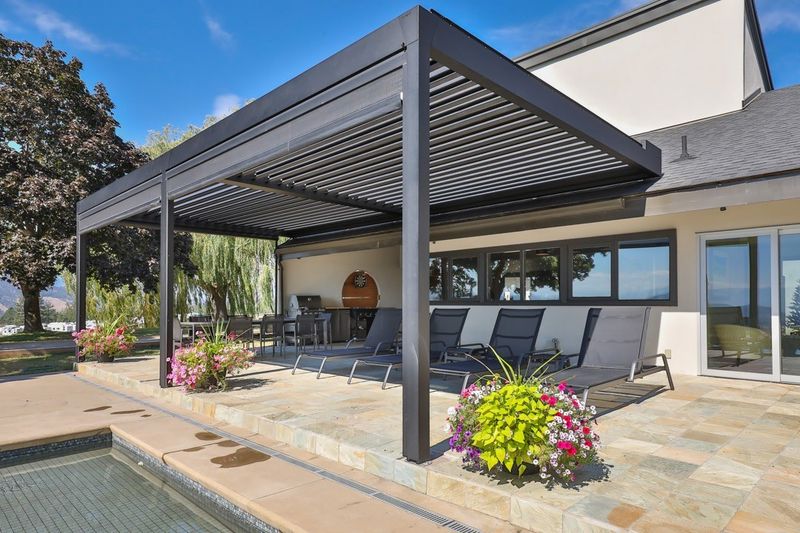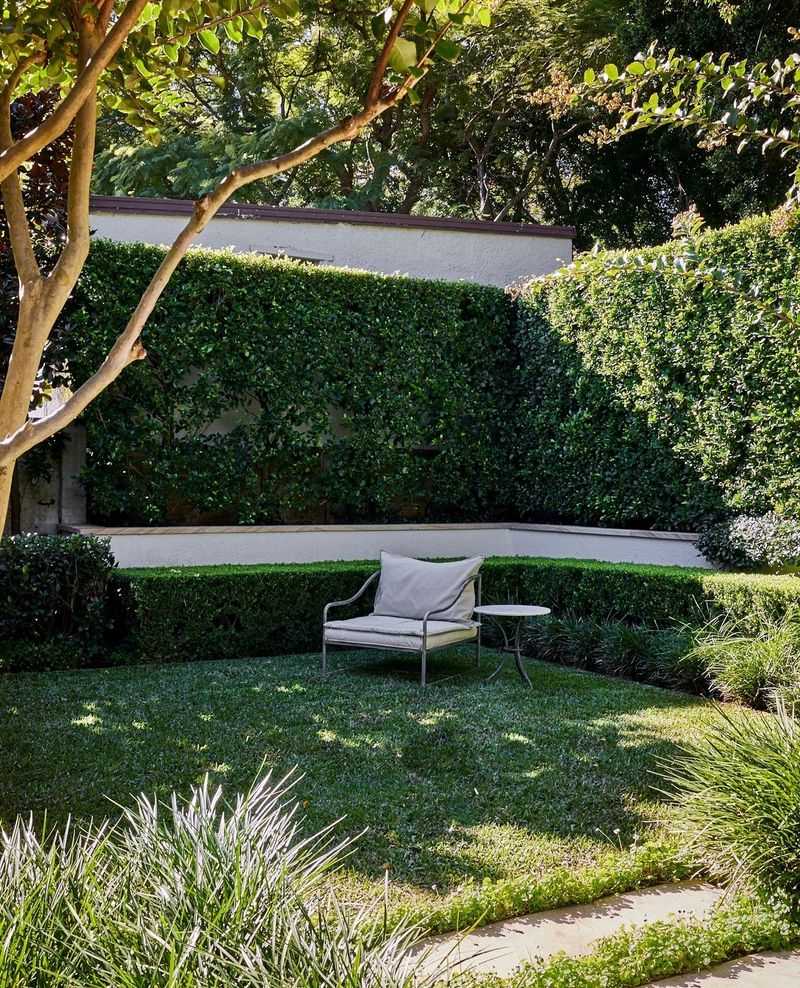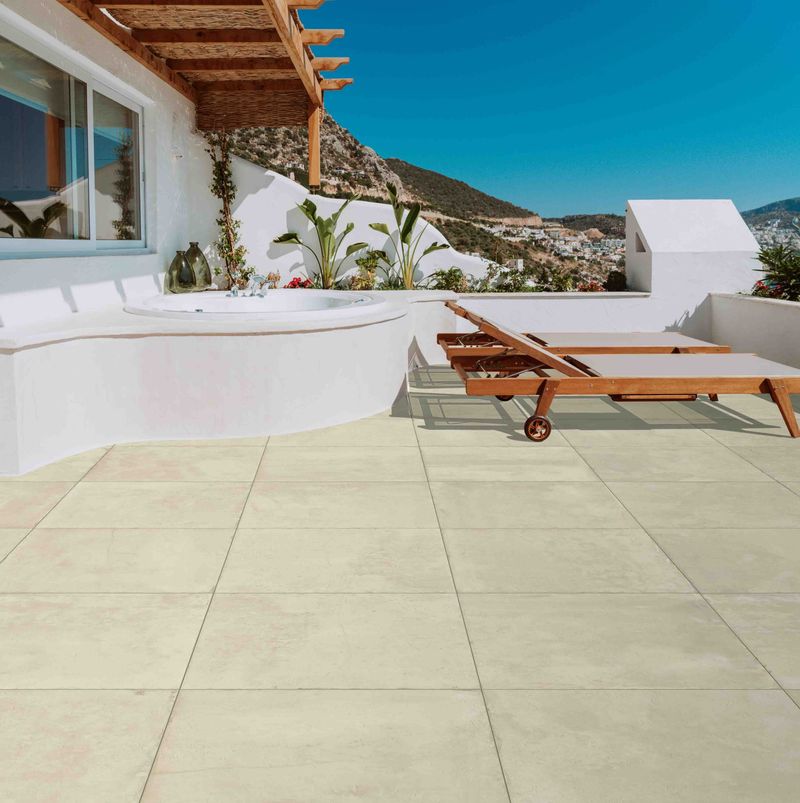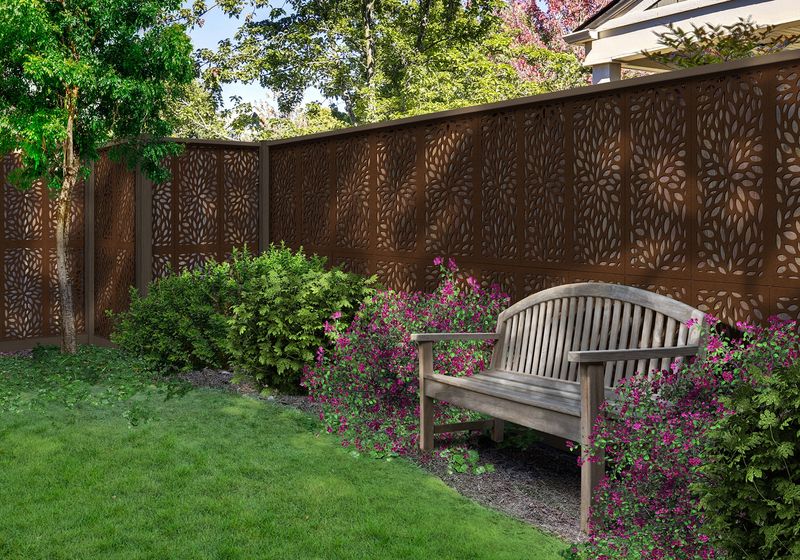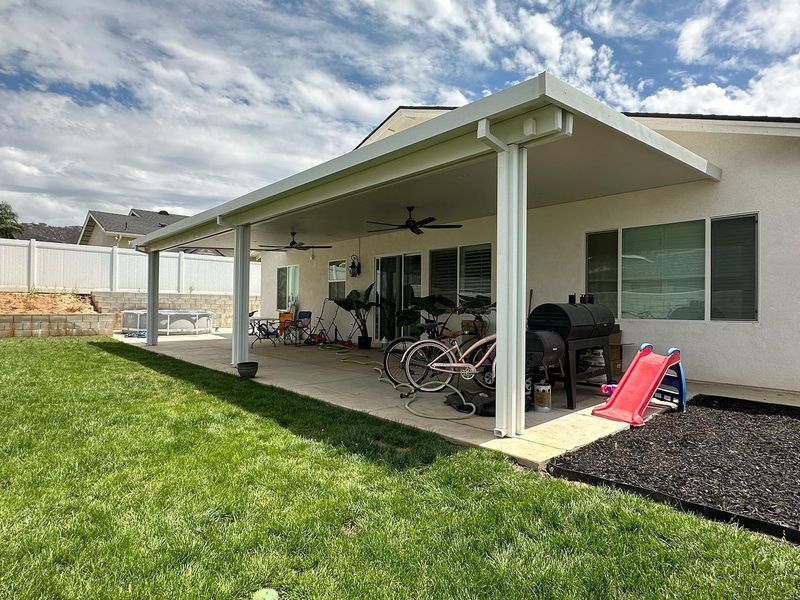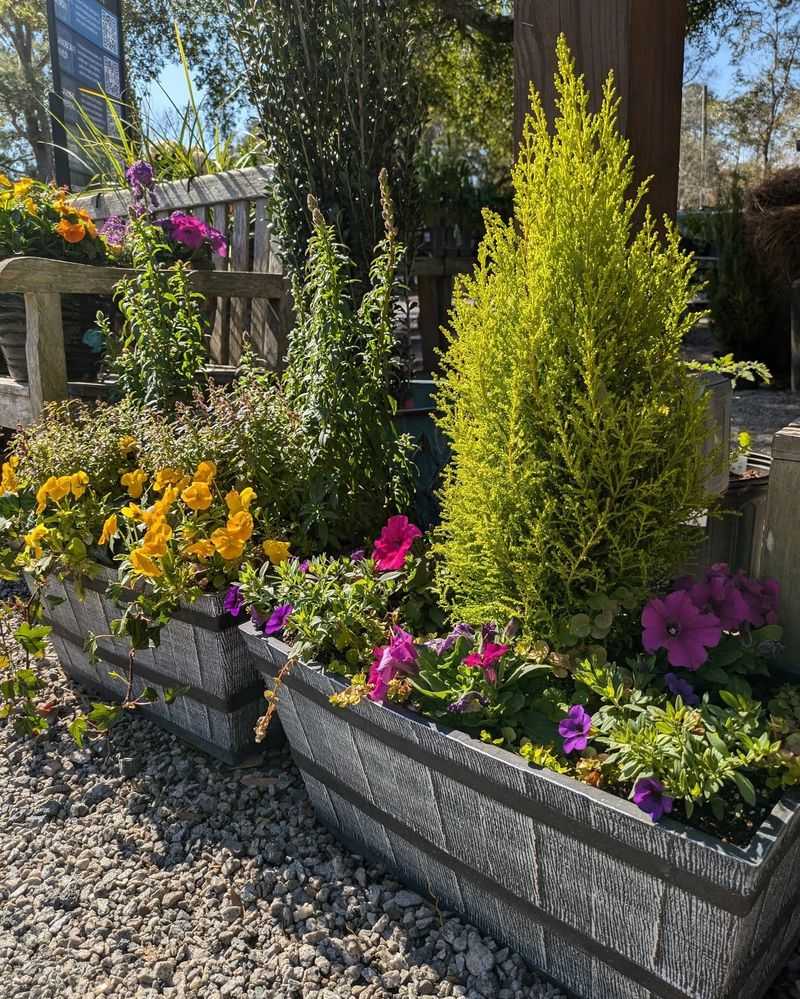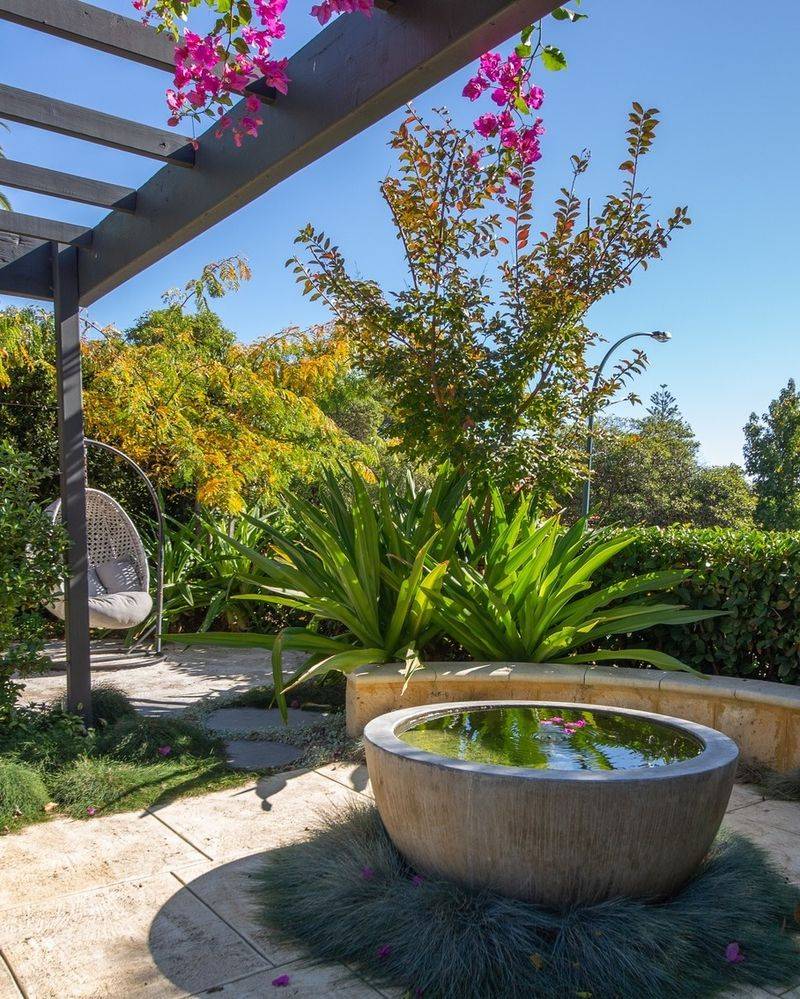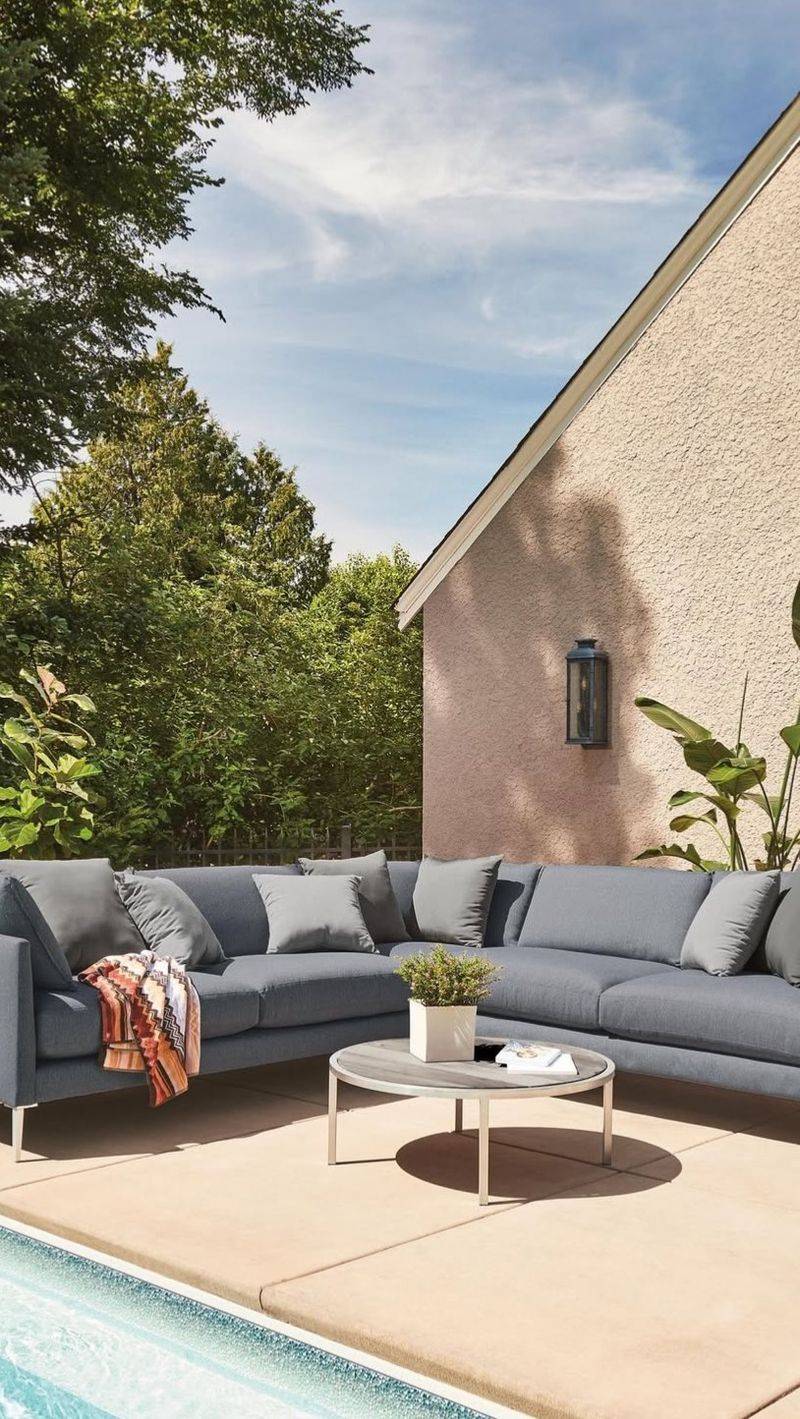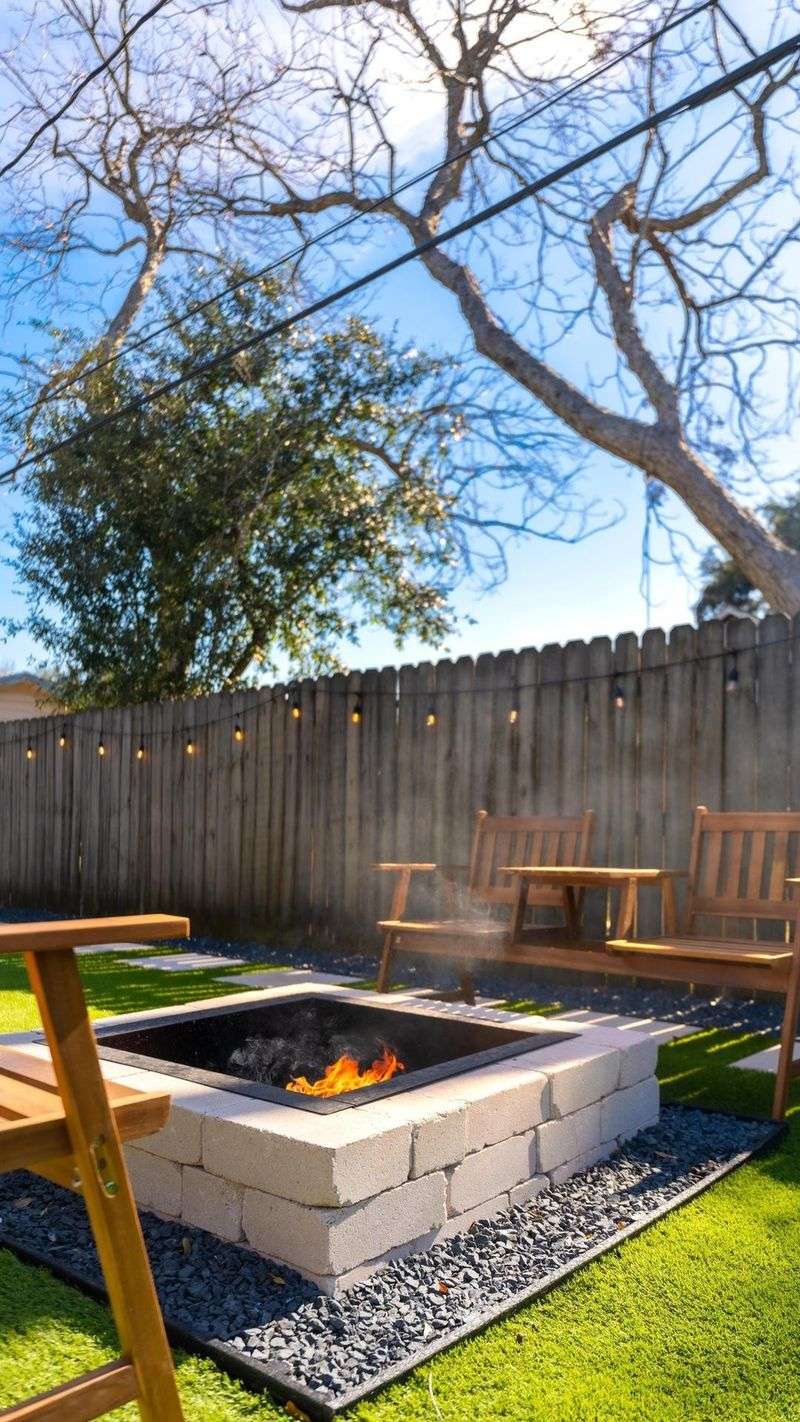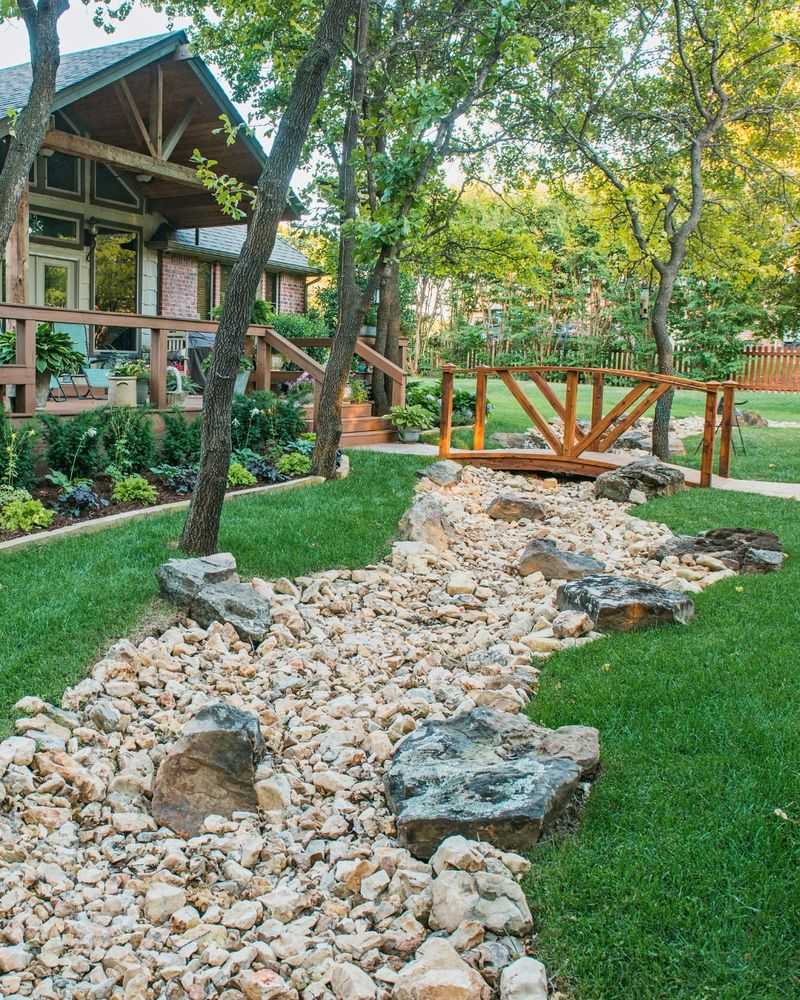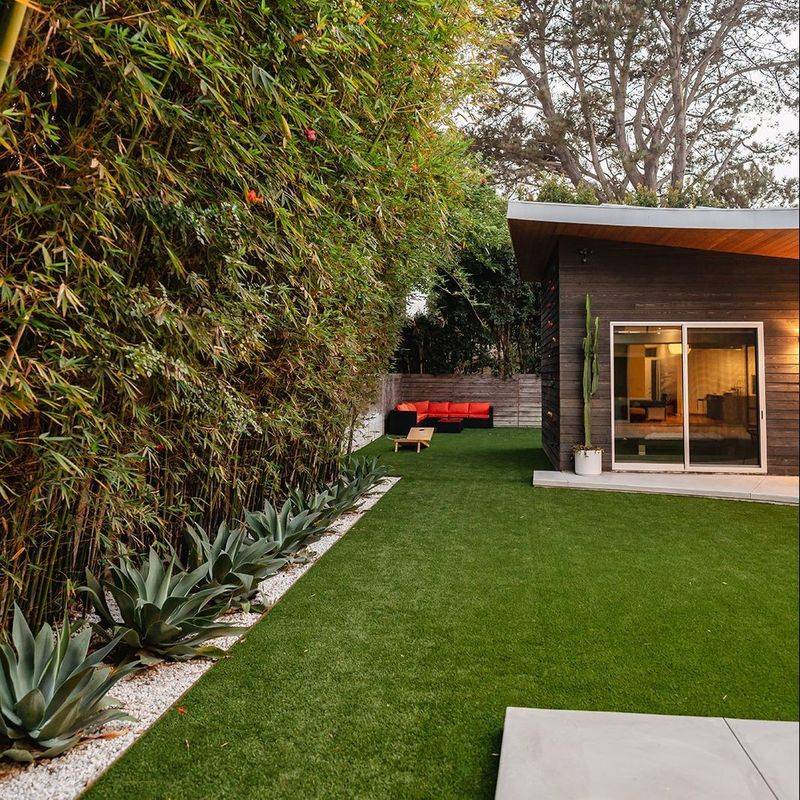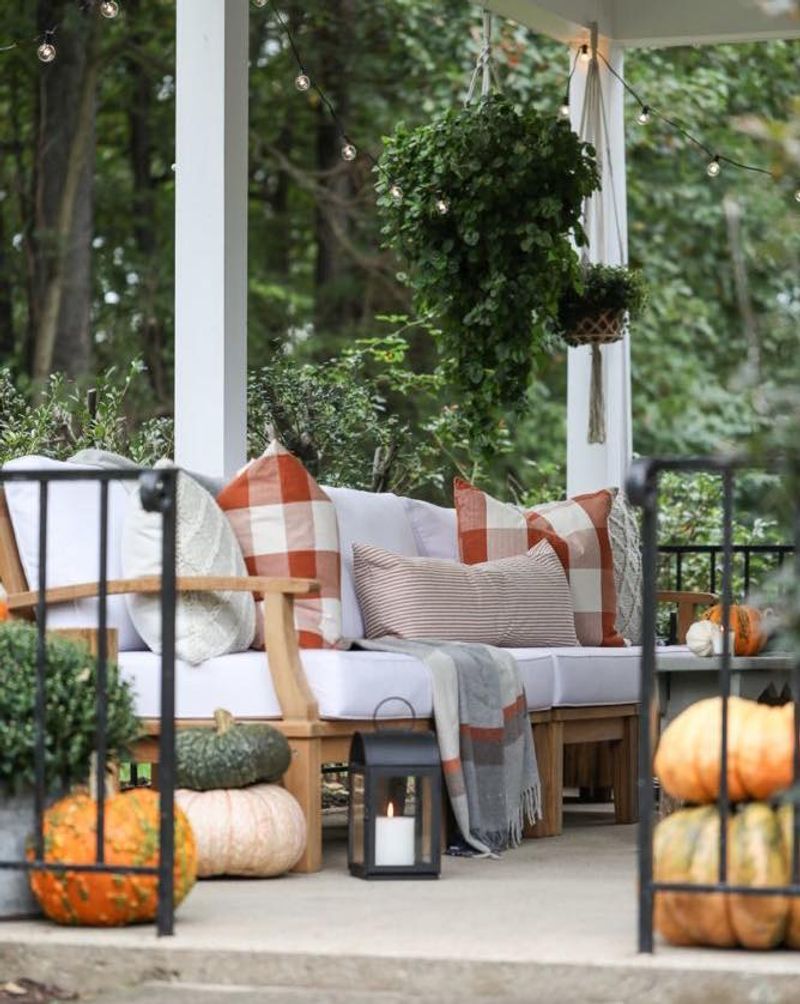Designing your dream patio should feel exciting—not like a stressful project that leaves you second-guessing every choice. I’ve seen firsthand how one small misstep can turn a cozy corner into a spot no one ever wants to use.
Whether you’re working with a tiny balcony or a full backyard layout, the right setup can make all the difference in how often you actually use the space.
Before you start shopping for furniture or laying down pavers, let’s go over the common patio pitfalls I’ve seen (and made!)—so you can skip the frustration and jump straight to enjoying your outdoor haven.
1. Ignoring Scale And Proportion
My neighbor’s enormous sectional sofa practically swallowed his tiny patio whole. Oversized furniture in small spaces creates awkward traffic flow and makes the area feel cramped rather than cozy.
Finding the right balance means measuring your space before purchasing anything. I sketch a quick floor plan on graph paper, marking dimensions and leaving at least 3 feet for walkways.
Properly scaled furniture creates harmony and makes even modest patios feel spacious. When I downsized my bulky dining set for a bistro table, my small patio suddenly felt twice as large while remaining functional.
2. Skimping On Comfortable Seating
Metal chairs without cushions might look sleek in photos, but they’ll send guests scrambling indoors after 20 minutes. I learned this lesson during a summer barbecue when everyone migrated inside despite the perfect weather. Comfort shouldn’t be an afterthought.
Weather-resistant cushions, ergonomic designs, and even outdoor pillows transform basic seating into inviting spots where people actually want to linger. Quality matters more than quantity here.
One comfortable conversation set encourages more outdoor living than six uncomfortable chairs ever will. My patio usage tripled after investing in cushions with quick-dry foam.
3. Forgetting About Lighting
Evening gatherings fizzle quickly when darkness falls and nobody can see their drinks, let alone each other’s faces. Before adding proper lighting, my patio became a ghost town after sunset. Layered lighting creates both function and atmosphere.
String lights provide ambient glow, while pathway lights ensure safety. Task lighting near cooking areas lets you flip burgers without holding a flashlight in your teeth. Solar options have improved dramatically in recent years.
My solar-powered string lights charge during the day and automatically illuminate the space each evening, extending our usable hours without increasing the electric bill.
4. Neglecting Weather Protection
Summer rainstorms sent me scrambling to rescue cushions too many times before I finally addressed the obvious: outdoor spaces need weather solutions. Without coverage, your patio becomes unusable during precipitation or intense sun.
Adding an umbrella, pergola, or retractable awning dramatically increases usability. The shade sail I installed over part of my patio dropped the surface temperature by nearly 15 degrees during hot afternoons. Consider local weather patterns when choosing solutions.
Living in a windy area, I learned to secure my umbrella with a heavy base after watching my neighbor’s take flight during a gusty day. Now we enjoy our space regardless of light rain or blazing sun.
5. Creating A Flat, Boring Space
Perfectly flat patios often feel more like airport runways than inviting retreats. My first patio design lacked dimension – everything sat at the same height, creating a monotonous, uninspiring space. Varying heights adds visual interest and functionality.
Raised planters, different seating levels, and hanging elements draw the eye upward and create natural zones within your space. Even simple additions make a difference.
Adding tall planters behind my sofa created a sense of enclosure while vertically-hung string lights drew attention upward. These easy changes transformed my flat patio into a dynamic outdoor room with much more character.
6. Choosing Impractical Flooring
Those glossy patio tiles looked gorgeous in the showroom but turned into dangerous slip hazards after the slightest rain. Selecting materials without considering real-world conditions leads to maintenance headaches and safety issues.
Climate should dictate flooring choices. Freeze-thaw cycles crack certain materials, while intense sun fades others. The textured concrete pavers I eventually chose provide reliable traction even when wet. Maintenance requirements matter too.
After struggling with wood decking that needed annual refinishing, switching to composite decking freed up my weekends for actually enjoying the space rather than maintaining it. Sometimes practical trumps pretty.
7. Overlooking Privacy Needs
Feeling like you’re in a fishbowl quickly ruins relaxation time. My corner lot patio initially had three exposed sides, making quiet morning coffee feel like a public performance for passing neighbors. Strategic screening creates sanctuary-like spaces.
Tall planters with bamboo created a natural privacy screen along one edge of my patio, while a decorative metal panel blocks the direct sightline from the street. Privacy solutions can double as design elements.
The wooden slat wall we built not only shields us from the adjacent property but also serves as a beautiful backdrop for hanging plants and outdoor art. Now our conversations stay private without making the space feel closed in.
8. Installing Insufficient Outlets
Extension cords snaking across walking paths create both eyesores and tripping hazards. During our first outdoor movie night, we daisy-chained three cords just to power a projector – hardly the elegant setup I’d imagined. Modern outdoor living requires proper electrical planning.
Consider needs for lighting, speakers, cooking appliances, heaters, and even charging phones or laptops if you work outside. Having an electrician add weather-protected outlets during our patio renovation was surprisingly affordable compared to the convenience it provides.
Now we have discreet power sources built into key areas, making everything from holiday lights to outdoor cooking seamlessly integrated rather than awkwardly improvised.
9. Planting Without Purpose
Random plants scattered in pots rarely create the lush oasis people envision. My early container gardening attempts looked more like a plant orphanage than thoughtful landscaping. Greenery should solve specific problems while adding beauty.
Tall grasses provide privacy, fragrant herbs repel mosquitoes, and trailing vines soften harsh edges. Grouping containers creates more impact than spreading them randomly. Consider maintenance realistically.
After killing numerous high-maintenance specimens, I embraced drought-tolerant varieties that thrive with minimal attention. The structured plantings around my patio now provide year-round interest without requiring weekend-consuming care routines.
10. Creating Dead-End Traffic Flow
Arranging furniture without considering movement patterns leaves guests awkwardly shuffling sideways or climbing over each other. My patio once forced everyone to enter and exit through the same narrow passage, creating constant bottlenecks during gatherings.
Circulation paths should flow naturally through the space. Furniture placement should create conversation areas while allowing easy movement between zones without obstacle courses.
After rearranging our layout to create a circular flow pattern with multiple access points, guests naturally spread throughout the space rather than clustering by the door. Even our small patio feels more spacious simply because people can move through it intuitively.
11. Using Indoor Materials Outdoors
That gorgeous fabric-covered ottoman looked perfect until the first rainstorm transformed it into a soggy, moldy mess. Regular indoor materials simply aren’t designed to withstand temperature fluctuations, moisture, or UV exposure. Weather-resistant doesn’t mean uncomfortable or ugly anymore.
Today’s outdoor-rated fabrics come in beautiful textures and patterns while resisting fading and mildew. The same goes for rugs, artwork, and even furniture frames. Investing in proper outdoor materials actually saves money long-term.
My weather-resistant wicker sectional has survived five seasons looking nearly new, while my neighbor has replaced her unsuitable furniture twice in the same timeframe. Sometimes paying more upfront means spending less overall.
12. Forgetting About Seasonal Changes
Designing only for perfect summer days leaves your patio abandoned most of the year. My beautiful space sat unused through three seasons until I finally addressed the weather realities of our climate. Extending usable months requires thoughtful additions.
A fire pit transformed chilly evenings into cozy gathering opportunities. Likewise, ceiling fans made hot afternoons bearable by creating cooling breezes. Even simple solutions help. Keeping a basket of lightweight throws near seating lets guests adjust to temperature drops without going inside.
Since adding these seasonal adaptations, our outdoor living time has more than doubled – we’re out there from early spring through late fall.
13. Skipping Proper Drainage Planning
Watching water pool on your patio after rain quickly dampens enthusiasm for outdoor living. The standing water on my first patio installation created mosquito breeding grounds and eventually damaged the foundation. Proper grading ensures water flows away from both your home and seating areas.
Even slight slopes (about ¼ inch per foot) make tremendous differences in how quickly surfaces dry after precipitation. French drains or dry creek beds can become attractive design features while solving moisture problems.
The decorative river rock channel we installed not only prevents puddles but adds visual interest to what was previously a problem area. Now rain enhances rather than ruins our outdoor experience.
14. Creating A Maintenance Nightmare
High-maintenance designs quickly lose their charm when weekends disappear into endless upkeep. The elaborate water feature I initially installed required constant cleaning, pump maintenance, and algae treatment – hardly the relaxing addition I’d envisioned.
Consider your realistic time and interest in maintenance before committing to design elements. Low-maintenance doesn’t mean boring; it means smart material choices and simplified designs that look good without constant attention.
Replacing labor-intensive components with simpler alternatives freed our weekends. Swapping the fussy water feature for an attractive self-watering planter provided the focal point without the work. Your outdoor space should serve you, not become another job.
15. Failing To Include Personal Touches
Catalog-perfect patios often lack soul and personality. My early attempts at outdoor decorating looked polished but generic – like anyone could have created the space rather than something uniquely ours. Personal elements transform cookie-cutter spaces into meaningful retreats.
Incorporating family mementos, artwork that speaks to you, or collections that reflect your interests makes the space truly yours rather than a showroom display. Some of our most-complimented features cost almost nothing.
The vintage lanterns from my grandfather’s farm, repurposed as planters, spark more conversation than our expensive furniture. These personal touches create an authentic space that tells your story and makes guests feel connected to your home.

